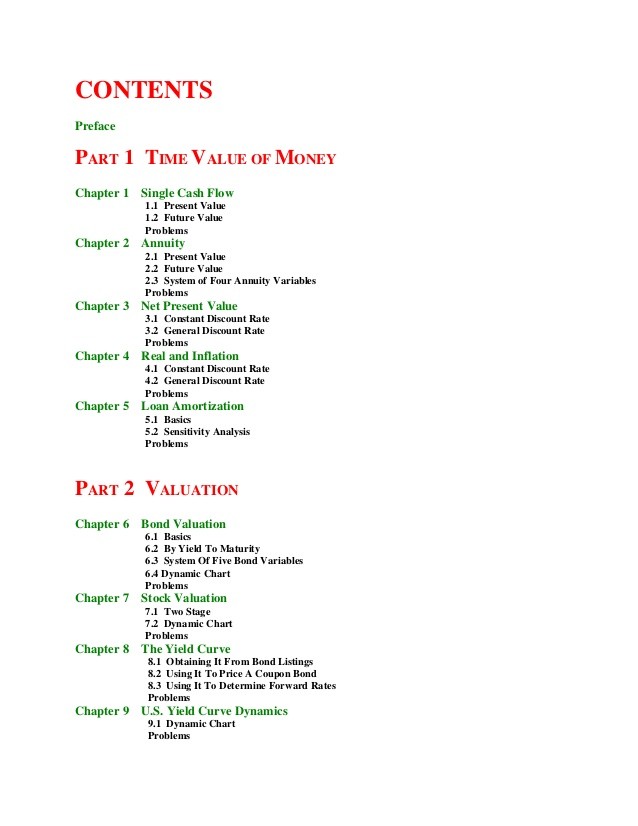Taking Stock Of Discounted Cash Flow_1
Post on: 29 Июль, 2015 No Comment

Discounted Cash Flow.
refers to a method of valuing a company that is commonly used by private company investors. Unlike the market valuation method described in the Pricing entry, the discounted cash flow method estimates company value without resort to the price-earnings ratios of similar publicly held companies.
The premise of the method is that company value can be estimated by forecasting future performance of the business and measuring the surplus cash flow generated by the company. The surplus cash flows and cash flow shortfalls are discounted back to a present value and added together to arrive at a valuation. The discount factor used is adjusted for the financial risk of investing in the company. The mechanics of the method focus investors on the internal operations of the company and its future.
Like any other valuation method, the discounted cash flow method has its shortcomings. Since it focuses only on the generation of cash flow it ignores outside factors that affect company value, such as price-earnings ratios. It also ignores asset values and other internal factors that can reduce or increase company value.
Nonetheless, it is a commonly used method in venture capital financings because it focuses on what the venture investor is actually buying, a piece of the future operations of the company. Its focus on future cash flows also coincides nicely with a critical concern of all venture investors, the company’s ability to sustain its future operations through internally generated cash flow.
The discounted cash flow method can be applied in six distinct steps. Since the method is based on forecasts, a good understanding of the business, its market and its past operations is a must. The steps in the discounted cash flow method are as follows:
Develop accurate, debt free projections of the company’s future operations. This is clearly the critical element in the valuation. The more closely the projections reflect a good understanding of the business and its realistic prospects, the more confident investors will be with the valuation its supports.
-

Quantify positive and negative cash flow in each year of the projections
. The cash flow being measured is the surplus cash generated by the business each year. In years when the company does not generate surplus cash, the cash shortfall is measured. So that borrowings will not distort the valuation, cash flow is calculated as if the company had no debt. In other words, interest charges are backed out of the projections before cash flows are measured.
-
Estimate a terminal value for the last year of the projections
. Since it is impractical to project company operations out beyond three to five years in most cases, some assumptions must be made to estimate how much value will be contributed to the company by the cash flows generated after the last year in the projections. Without making such assumptions, the value generated by the discounted cash flow method would approximate the value of the company as if it ceased operations at the end of the projection period. One common and conservative assumption is the perpetuity assumption. This assumption assumes that the cash flow of the last projected year will continue forever and then discounts that cash flow back to the last year of the projections.
-
Determine the discount factor to be applied to the cash flows
. One of the key elements affecting the valuation generated by this method is the discount factor chosen. The larger the factor is, the lower the valuation it will generate. This discount factor should reflect the business and investment risk involved. The less likely the company is to meet its projections, the higher the factor should be. Discount factors used most often are a compromise between the cost of borrowing and the cost of equity investment. If the cost of borrowed money is 10% and equity investors want 30% for their funds, the discount factor would be somewhere in between.
-
Apply the discount factor to the cash flow surplus and short fall of each year and to the terminal value
. The amount generated by each of these calculations will estimate the present value contribution of each year’s future cash flow. Adding these values together estimates the company’s present value assuming it is debt free.
-
Subtract present long term and short term borrowings from the present value of future cash flows to estimate the company’s present value
.
The following chart illustrates the computations made in the discounted cash flow method. The chart assumes a discount factor of 13% and uses the perpetuity assumption to generate a residual value for the cash flows after the fifth year. The numbers contained in the Discount column represent the present value of 1.00 discounted back at 13% per year.














